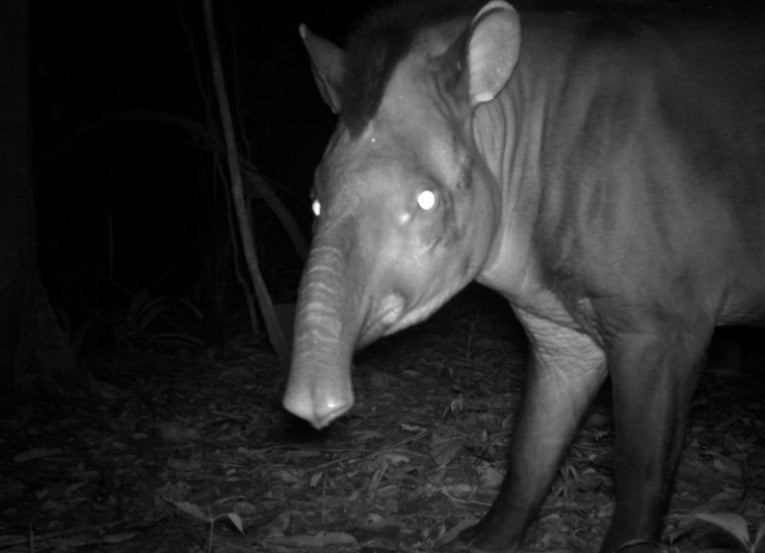A global camera trap study has revealed images of 105 different species using 420 cameras in seven countries. In the largest study of its kind, the resulting 52,000 photographs have given researchers new insights into the lives of mammals across the planet.
What has been clear from the report in the journal, Philosophical Transactions of the Royal Society, is that habitat loss and fragmented forests are detrimental to the survival of many species.
One of the researchers, Jorge Ahumada, said: "The results of the study are important in that they confirm what we suspected. Habitat destruction is slowly but surely killing our planet's mammal diversity."
The camera traps were used between 2008 and 2010 at seven worldwide locations, chosen in relation to the degree of habitat fragmentation that had occurred.These included the Bwindi Impenetrable Forest in Uganda, Manaus in Brazil, the Central Suriname Nature Reserve and the Burkit Barisan Selatan National Park in Indonesia.
During the course of studying the data, animals were grouped by species and diet, as well as other factors. It was noted that mammals living in larger continuous habitats, such as Central Suriname Nature Reserve, had much greater diversity of animal life, compared to those in fragmented habitats, such as Nam Kading Reserve in South East Asia.
Diet appeared significant, commented Dr Ahumada: "Some mammals seem more vulnerable to habitat loss than others: insect-eating mammals - like anteaters, armadillos and some primates are the first to disappear, while other groups, like herbivores, seem to be less sensitive."
The animals caught on film ranged from the tiny Linnaeu's Mouse Opossum to, on the other end of the scale, the African Elephant. But what makes this particular project so significant though, is the size of the experiment. By taking in habitats across the planet, the scientists were able to monitor real diversity change based on habitat loss globally.
What's important next, said Ahumada is that this information gets to decision-makers with the power to take the action needed to prevent further habitat fragmentation and mammal extinctions.
The study, undertaken by the Tropical Ecological Assessment and Monitoring network (TEAM), is already being extended to include further sites including Panama, Peru, Madagascar and India.
Top Image Caption: Central Suriname Nature Reserve, Suriname. Tapirus terrestris (South American Tapir) - a vulnerable species. Of the sites researched, this one presented the highest number of species diversity (28). Global Camera Trap Mammal.
Top Image Credit: © Conservation International Suriname as part of the TEAM Network Partnership/www.teamnetwork.org










